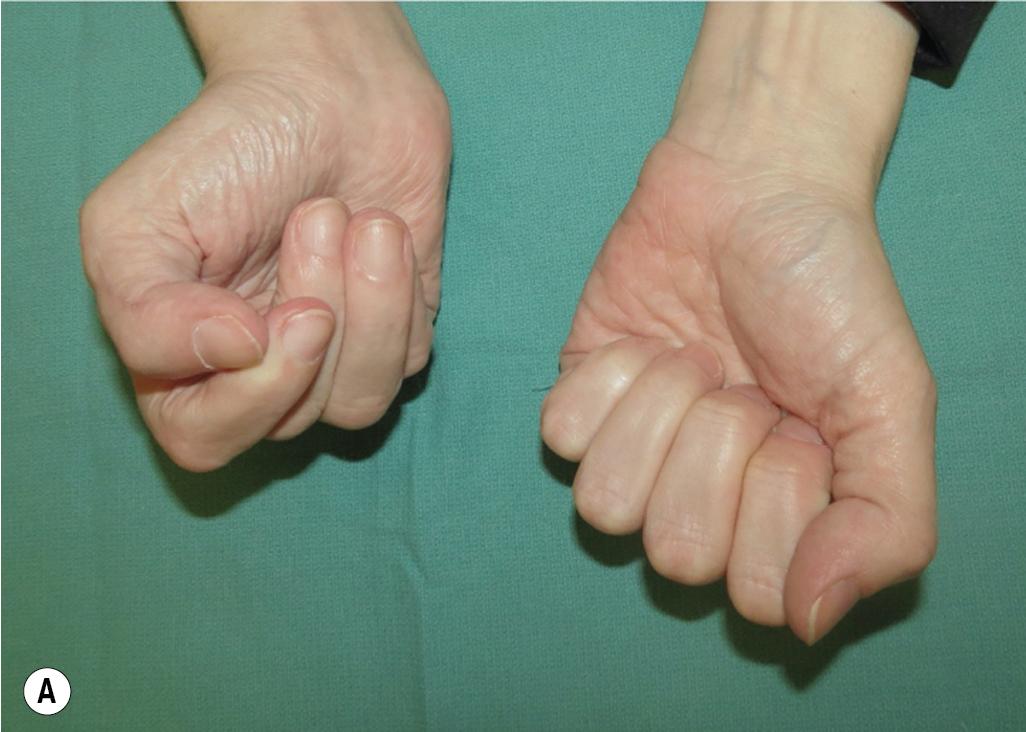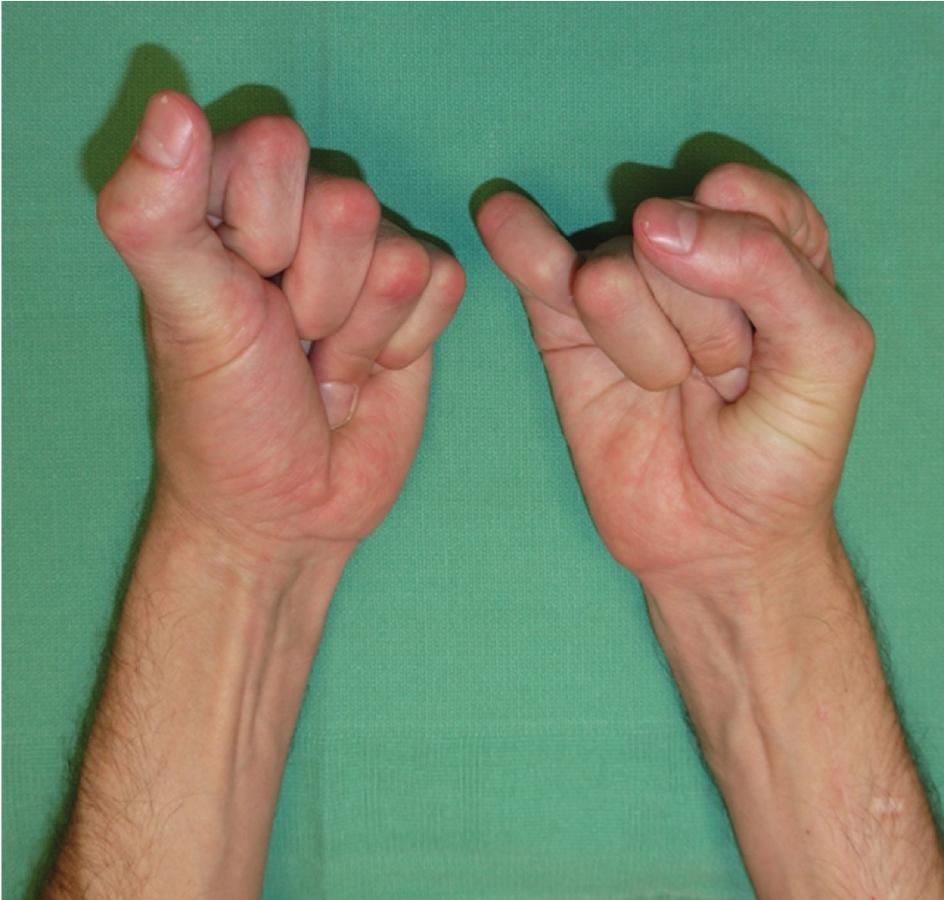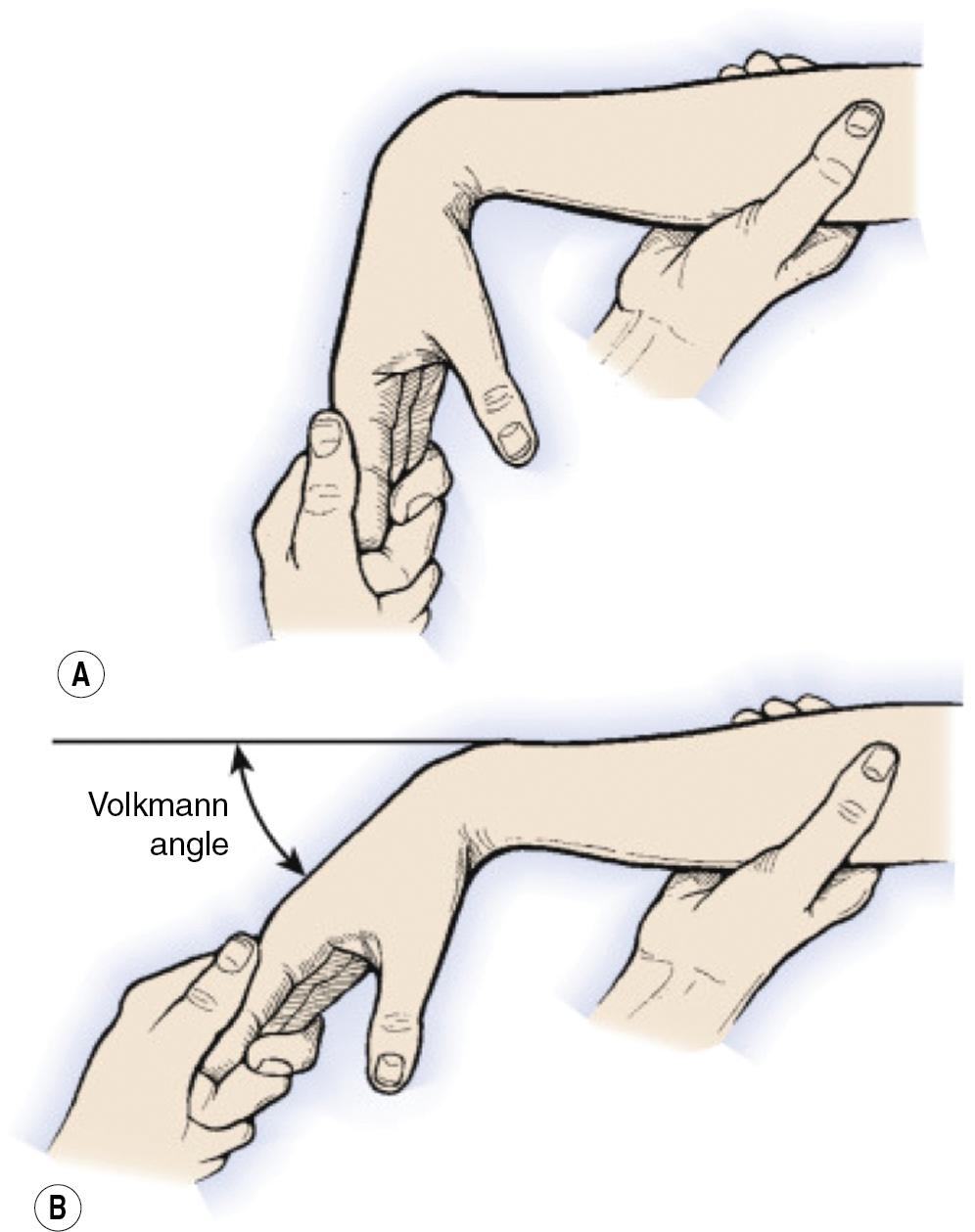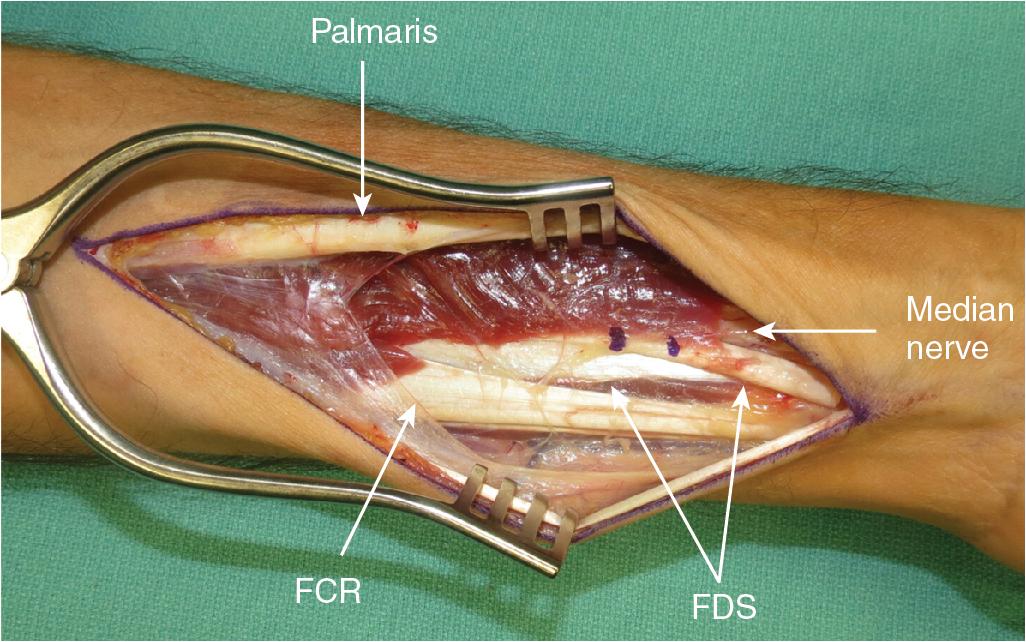Physical Address
304 North Cardinal St.
Dorchester Center, MA 02124
An indication is patients with spastic wrist and finger flexion contractures resulting in functional limitations in activities of daily living, poor hygiene, and undesirable hand appearance.
Patients should have exhausted nonoperative treatments, including splinting, occupational therapy, serial casting, and pharmacologic agents (e.g., botulinum toxin A, baclofen).
Indications may vary based on the patient’s cognitive ability and baseline function.
For patients with little voluntary control and minimal sensibility, hand hygiene is the primary indication.
With more control, surgery must be tailored to the specific functional limitations of each patient.
Hand function may be evaluated using the House Classification ( Table 100.1 ).
| House Classification | |
|---|---|
| 0 | Does not use |
| 1 | Poor passive assist |
| 2 | Fair passive assist |
| 3 | Good passive assist |
| 4 | Poor active assist |
| 5 | Fair active assist |
| 6 | Good active assist |
| 7 | Spontaneous use, partial |
| 8 | Spontaneous use, complete |
Fractional lengthening permits correction of mild deformities ( Fig. 100.1A–B ) and also maintains function; this should be the primary surgical option in patients with volitional motion (House grade 2 or greater).

Flexor digitorum superficialis (FDS) to flexor digitorum profundus (FDP; superficialis-to-profundus transfer, STP) transfer is reserved for significant contracture (i.e., inability to extend the fingers even when the wrist is flexed; Fig. 100.2 ). The procedure greatly reduces the ability to flex the fingers and should be performed in patients who do not use finger flexion for function (House 0 or 1).

STP transfer is contraindicated in patients with functional voluntary finger flexion and grasp.
Clinical examination of spasticity is frequently challenging because of limitations in patient cognition, cooperation, and function.
Multiple separate examinations and even video recordings can be helpful to characterize the patient’s upper extremity function.
Involved spastic muscles, weak antagonist muscles, and underlying joint contractures must all be identified and documented.
Selective peripheral nerve blocks can relax spastic muscles to permit complete joint motion examination.
Wrist flexion also takes tension off the spastic finger flexors to permit evaluation of any metacarpophalangeal (MCP) or interphalangeal (IP) joint contracture.
Wrist flexion contractures are frequently caused by a spastic flexor carpi ulnaris (FCU), with occasional contribution from the flexor carpi radialis (FCR) and palmaris longus (PL).
Perform Volkmann’s test for digital flexor tightness by first extending the digits fully with the wrist flexed. Then the wrist is slowly extended while maintaining full finger extension. Surgery may be indicated if the wrist cannot be extended beyond neutral (0 degrees; Fig. 100.3A–B ).

Sensation, including stereognosis, two-point discrimination, and proprioception, should be assessed.
X-rays of the hand and wrist should be obtained preoperatively to rule out arthrosis or bony blocks to motion.
A thorough knowledge of forearm anatomy is a mandatory prerequisite for this operation ( Fig. 100.4 ).

Volarly, the FCR, PL, and FCU are encountered most superficially. Proximally, the pronator teres (PT) may be seen too.
The FDS is immediately deep to the superficial muscles.
The deep volar forearm contains the flexor digitorum profundus (FDP), flexor pollicis longus (FPL), and pronator quadratus (PQ).
The median nerve travels between the FDS and FDP proximally and between the FDS and FPL distally.
The palmar cutaneous branch of the median nerve emerges volarly 5 cm proximal to the wrist crease and runs just ulnar to FCR.
The ulnar neurovascular bundle travels deep underneath the FCU muscle.
Supine positioning with a hand table and an upper arm tourniquet are used.
Become a Clinical Tree membership for Full access and enjoy Unlimited articles
If you are a member. Log in here